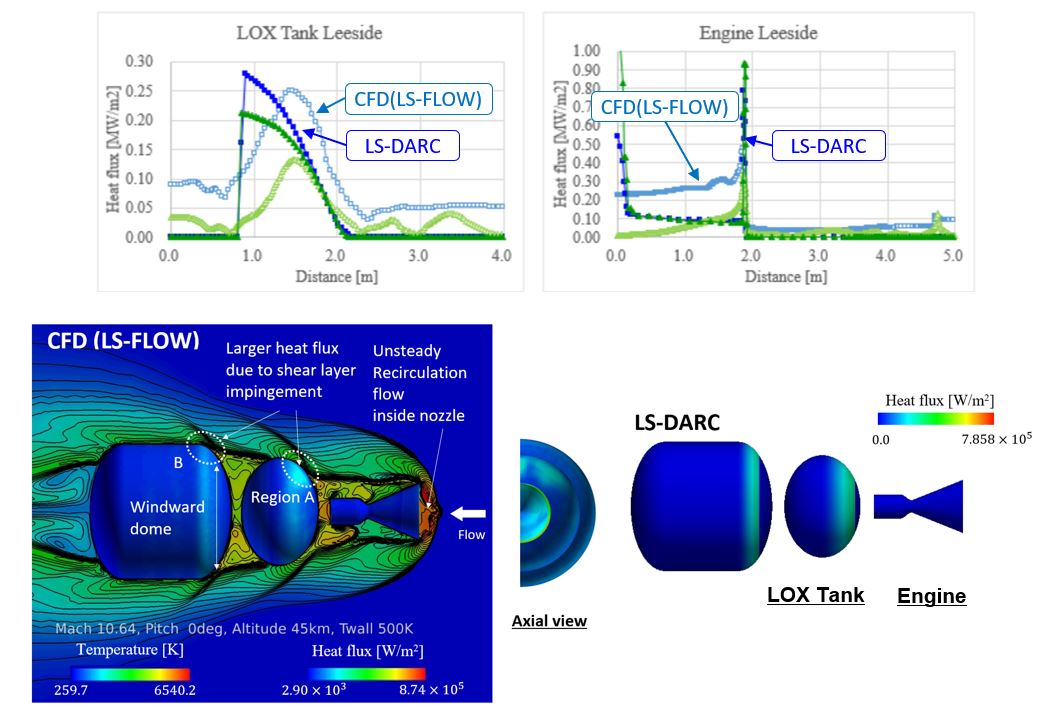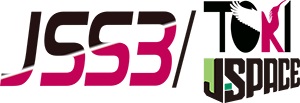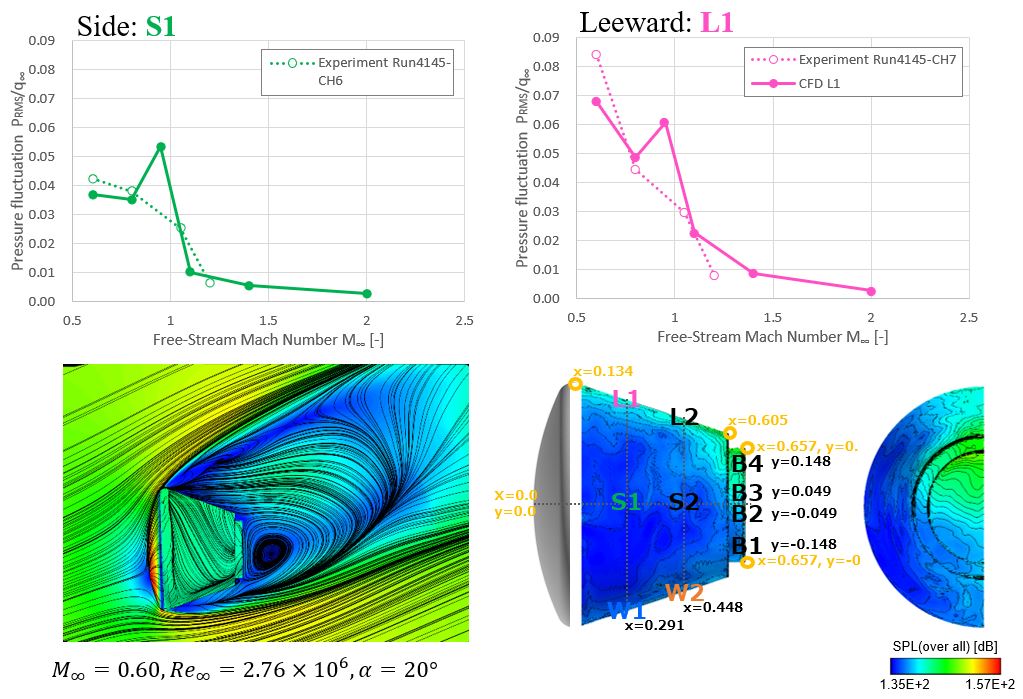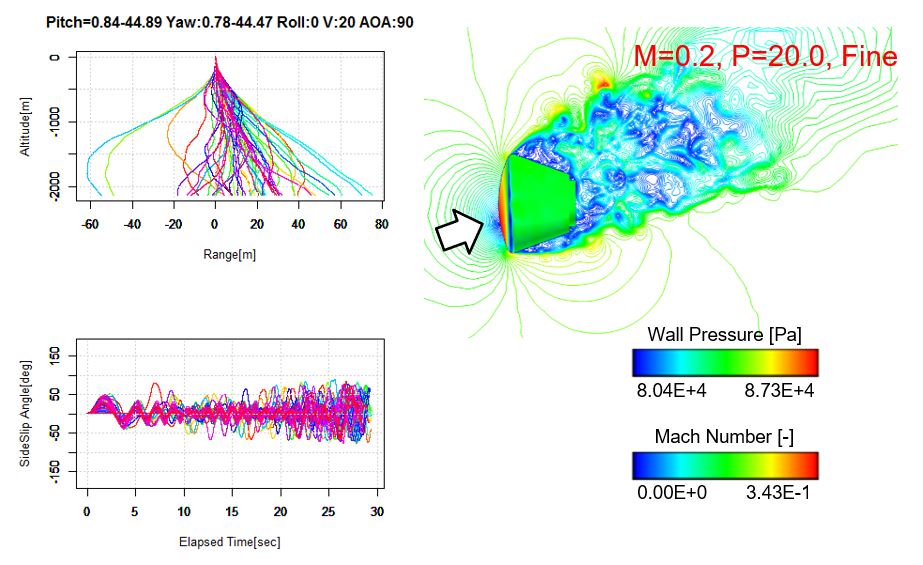Development of Quantitative Safety Analysis Method by High-fidelity Simulations
JAXA Supercomputer System Annual Report April 2017-March 2018
Report Number: R17EG3216
Subject Category: Research and Development
- Responsible Representative: Eiji Shima, Reseach and Development Directorate, Reseach Unit III
- Contact Information: Keiichiro Fujimoto fujimoto.keiichiro@jaxa.jp
- Members: Keiichiro Fujimoto, Takayuki Itoh, Shota Suto, Tetsufumi Ohmaru, Akimitsu Terunuma
Abstract
In order to perform detailed destructive re-entry safety analysis and to obtain the validation data for the empirical models, the aerodynamic and heat flux analysis under the wide range of flow conditions based on the developed rapid turn-around CFD method is carried out. In addition, by using the developed tools, the aerodynamic and heat flux design analysis are conducted in order to support the research and development activities for the small re-entry capsule installed in HTV and the fly-back re-usable rocket.
Reference URL
N/A
Reasons for using JSS2
Accurate high-fidelity numerical simulations for the complicated physics under the wide range of conditions is essential for the quantitative safety analysis. In addition, the analysis methods and its results are high-level confidential information. Therefore, high-performance own supercomputer system is essential.
Achievements of the Year
In the conventional re-entry safety analysis, the aerodynamic and heat flux models with conservative assumptions are used, and the system shape is treated as the combination of the simple geometries such as the sphere and the cylinders.
Due to these conservative assumptions, the predicted risk is generally resulting in the conservative risk which includes the various margins.
To meet the challenging safety requirement in the near-future by the design for safety at the early design stages, an establishment of the new destructive re-entry safety analysis method based on the high-fidelity numerical simulations is essential.
Therefore, in order to establish new re-entry safety analysis method, the detailed CFD analysis is carried out to obtain surface heat-flux distributions for the comparison with that by empirical heat-flux model employed for safety analysis.
Computed heat flux distributions obtained by CFD is compared with that by the empirical correlation model for simplified upper stage in Fig1.
Results obtained by empirical model are generally agreed well with that by CFD including small curvature area where larger heat flux is observed.
Research and development activities to realize next generation space transportation and re-entry systems such as the small re-entry capsule installed in HTV and the re-usable fly-back booster are under the way at JAXA.
In the aerodynamic design studies for such vehicles, large-scale parametric CFD analysis under the wide range of flow conditions is essential.
Aerodynamic analysis is the most time-consuming process which is the bottle-neck for the conceptual design and the probabilistic analysis.
In this study, rapid turn-around time CFD tool (LS-FLOW) is employed for such parametric studies.
For the development of small re-entry capsule installed in HTV, the aeroacoustics CFD is carried out to predict the pressure fluctuation level from the hypersonic through the subsonic conditions to decide the acoustics level for the enviormental resistance tests (Fig 2), aerodynamic CFD for 6 degree-of-freedom trajectory analysis is carried out to decide the side wind requirement for the high-altitude drop tests (Fig 3).
Parametric CFD studies for wide range of flow conditions are carried out for both studies.
For the aerodynamic design of the fly-back booster demonstrator, large scale parametric CFD study of various configuration under the wide range of flow conditions is conducted.
By the application of the developed CFD tool, large scale parametric CFD analysis becomes available, which is the key for the success of the next generation space transportation and the re-entry vehicles.

Fig.1: Comparison of surface heat-flux distributions obtained by CFD and the empirical model for rocket upper stage
Publications
■ Peer-reviewed papers
1)Ryuta Hatakenaka et al., “Thermal Design of Small Sample-Return Capsule Integrated into HTV,” ICES 2017, 2017.
■ Non peer-reviewed papers
1)K. Fujimoto, H. Tani, H. Negishi, Y. Saito, N. Iizuka, and K. Okita, “High-fidelity Numerical Simulations for Destructive Re-entry of Upper Stages,” in 7th European Conference on Space Debris, 2017.
2)F. Keiichiro, N. Hideyo, S. Yasuhiro, M. Spel, and G. Prigent, “BENCHMARK OF JAXA AND CNES RE-ENTRY SAFETY ANALYSIS TOOLS FOR ACCURATE HEAT-FLUX PREDICTION,” in IAASS 2017, 2017.
3)F. Keiichiro, N. Hideyo, N. Ryoh, and N. Kazuyuki, “Aero-Acoustics CFD Prediction for Re-entry Capsule at Subsonic to Supersonic Regine,” in AIAA Scitech 2018, 2018.
4)F. Keiichiro, N. Hideyo, S. Yasuhiro, N. Iizuka, and K. Okita, “Aerodynamic Characteristics and Heat Flux Model Development for Reentry Safety Analysis of Rocket Upper Stages”, 31st CFD Symposium, E09-4, 2017.
■ Other
1)F. Keiichiro et al., “Uncertainty Quantification for Destructive Re-Entry Risk Analysis”, Stardust Final Conference Advances in Asteroids and Space Debris Engineering and Science, Springer, 2018.
Usage of JSS2
Computational Information
- Process Parallelization Methods: MPI
- Thread Parallelization Methods: N/A
- Number of Processes: 64 – 512
- Elapsed Time per Case: 72.00 hours
Resources Used
Fraction of Usage in Total Resources*1(%): 0.56
Details
Please refer to System Configuration of JSS2 for the system configuration and major specifications of JSS2.
| System Name | Amount of Core Time(core x hours) | Fraction of Usage*2(%) |
|---|---|---|
| SORA-MA | 4,493,003.30 | 0.60 |
| SORA-PP | 0.00 | 0.00 |
| SORA-LM | 0.00 | 0.00 |
| SORA-TPP | 0.00 | 0.00 |
| File System Name | Storage Assigned(GiB) | Fraction of Usage*2(%) |
|---|---|---|
| /home | 421.40 | 0.29 |
| /data | 25,614.73 | 0.47 |
| /ltmp | 14,990.70 | 1.13 |
| Archiver Name | Storage Used(TiB) | Fraction of Usage*2(%) |
|---|---|---|
| J-SPACE | 0.24 | 0.01 |
*1: Fraction of Usage in Total Resources: Weighted average of three resource types (Computing, File System, and Archiver).
*2: Fraction of Usage:Percentage of usage relative to each resource used in one year.
JAXA Supercomputer System Annual Report April 2017-March 2018




